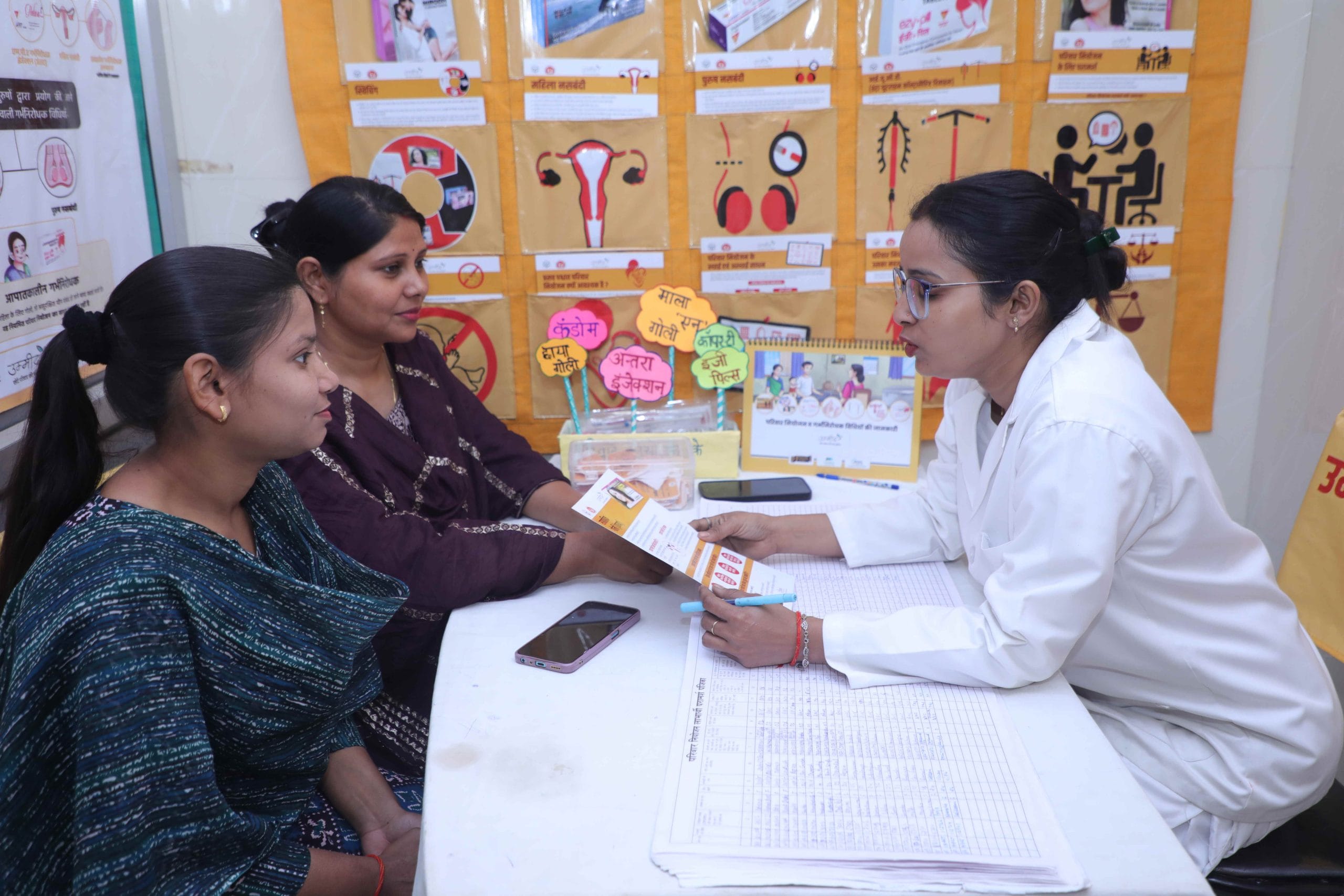When we say contraception, most of us think of condoms or perhaps birth control pills. But there are actually many more forms of contraception available in the market! Here is a list of contraceptions that one can use. Think of your needs and priorities and decide which is best for you. Consulting a gynaecologist can help!
1. External Condoms
External Condoms also known as male condoms are thin latex sheaths to be worn over the erect penis. It works by forming a barrier and preventing sperm from entering the other partner’s body. For best use, ensure that the condom is worn properly, before any contact between the penis and vagina, and removed by gripping the base. Do not use if torn, and do not reuse–condoms are for one-time use! External condoms are typically available in medical stores and supermarkets. Other than condoms made by private companies, India also has Nirodh, the subsidised condom distributed by the government. Condoms are lubricated and also coated with spermicide which helps increase their effectiveness as a contraceptive method.
2. Internal Condoms
Internal condoms also known as female condoms are typically made of nitrile polymer and can be used by people with a latex allergy. They are inserted inside the vagina before intercourse and have two flexible rings on either end to keep it in place. It covers the inside of the vagina and prevents sperm from entering. Internal condoms are available online.
Even if you are using other forms of contraception, it is advisable to use it along with condoms, unless both partners are tested and free of STIs/STDs.
Condoms are the only form of contraception that also protect against STDs and STIs. Even if you are using other forms of contraception, it is advisable to use it along with condoms, unless both partners are tested and free of STIs/STDs.
3. Diaphragm
A diaphragm is a shallow cup that is inserted high into the vagina before intercourse and placed right below the cervix. It is also a barrier method of birth control, that prevents sperm from entering the uterus. It is best used with spermicide, and should be left inside the vagina for six hours after intercourse to be effective.

4. Intrauterine Devices
Intrauterine Devices or IUDs are small, T shaped devices that are inserted inside the uterus to prevent pregnancy. A trained medical professional needs to insert it. They are both long-acting and reversible. This means that an IUD can remain inside the uterus for a long time- about 5-10 years. It can also be removed later if a pregnancy is desired, and fertility returns to normal. Hormonal IUDs contain hormones that increase the effectiveness of the IUD and also reduce the heavy bleeding that can sometimes be a side effect of using IUDs in some women. Non-Hormonal IUDs contain copper wire. Copper is a spermicide- which means that it is toxic to sperm and thus prevents it from joining with the egg.
5. Birth Control Pills
Birth control pills release hormones into the body to control ovulation and prevent pregnancy. There are two types of birth control pills. Combination pills contain both estrogen and progestin, and are the most common form of birth control pills. Progestin-only pills, or mini-pills contain only progestin. Both forms of birth control pills are effective in preventing pregnancy if taken regularly. Some women may experience temporary side effects like nausea, weight fluctuation or sore breasts.
Other hormonal methods like Depo Provera injection given every three months, or the patches or implants all work in the same way using hormones.
Also need: Problems With The I-Pill And Lack Of Awareness About Contraception
6. Sterilisation
Sterilization is a permanent, surgical and typically non-reversible form of birth control. One form of sterilization is a tubal ligation, in which the fallopian tubes are either severed or clamped shut. This way, the egg cannot enter the uterus for implantation.
It can be empowering to know that there are so many contraceptive options available, and to be fully informed about safer sex!
Male sterilization is called a vasectomy, where the vas deferens is cut and sealed, stopping the sperm from entering the ejaculate. The sperm continues to be produced but is re-absorbed and will not reach the semen.
Both of these procedures are surgical and require some anaesthesia. The Non Scalpel Vasectomy method does not require anaesthesia and is as simple as getting your ears pierced and less painful than a tattoo!
7. Fertility Awareness
The fertility awareness method requires you to track your monthly cycle so that you know when you are ovulating- that is, when your ovaries have released eggs. People track their ovulation in a few different ways, including checking for changes in vaginal discharge, changes in temperature or simply marking the dates on a calendar. Those who use this method will then avoid sexual intercourse during their fertile window- which includes the days before and during ovulation. The FAM is not a fully reliable form of contraception for the long term, and is even less effective if your monthly cycle fluctuates. This method is best used along with other forms of contraception.
8. Emergency Contraception
Emergency contraception includes the i-pill or the morning after pill. It is not a regular form of contraception and is ideally only supposed to be taken in specific emergency situations. If you have been taking emergency pills regularly, consider switching to a safer form of contraception that is meant for regular use since that is more effective.
Emergency contraception is not an abortion pill – it can only prevent fertilization and cannot terminate a pregnancy that has already taken place.
It can be empowering to know that there are so many contraceptive options available, and to be fully informed about safer sex! But it’s also important to keep in mind that even with the best method and the best use there can always be some chance of failure.
That is one of the reasons why abortions need to be recognized as a viable option!
An surgical or medical abortion carried out by a trained medical professional is a safe and reliable option in case of contraceptive failure.
Also read: 7 Toxic Practices Around Reproductive Health And How We Can Stop Them
Featured Image Source: Global News
About the author(s)
Anagha is pursuing her MA in Media & Culture from TISS Mumbai.





Good read!
I came across the Jan Aushadi campaign through a family whatsapp group and did some reading to get to know it a bit better. I was surprised to find no mention of contraceptives and quite a good amount of info on pregnancy tests etc.
As someone who hasn’t lived in India since the age of 15 (moved 10 years ago), I’m not familiar with what’s the take on birth control options. Is it as easily available as it is in the US? Do people feel comfortable using it as we do here?
For example, my health insurance gives me an option to pick a form of birth control option and that one option is free. I chose the daily pill – it works for me. I also happen to know several women who take it because it helps with the regularity and not let you bleed to death basically lol.
Just a curious mind here getting to know the culture better!